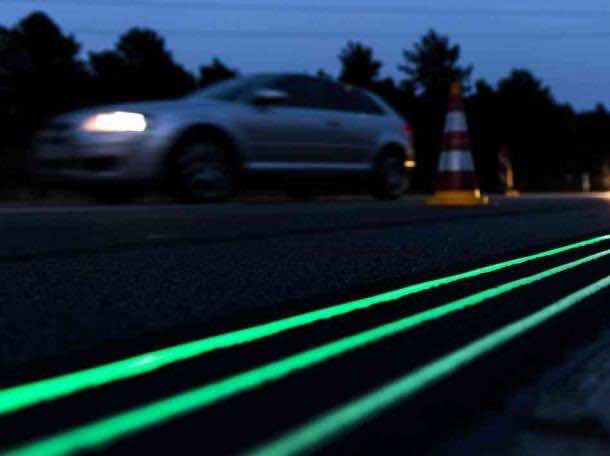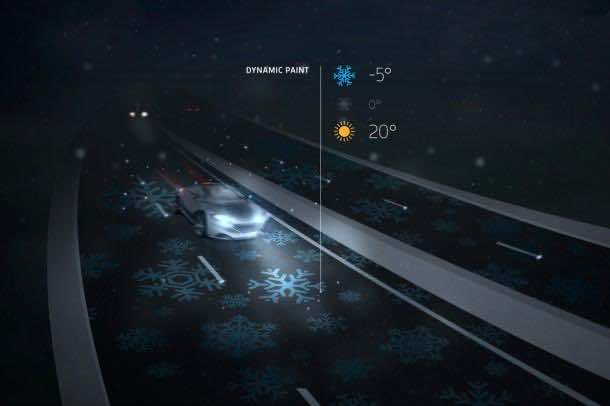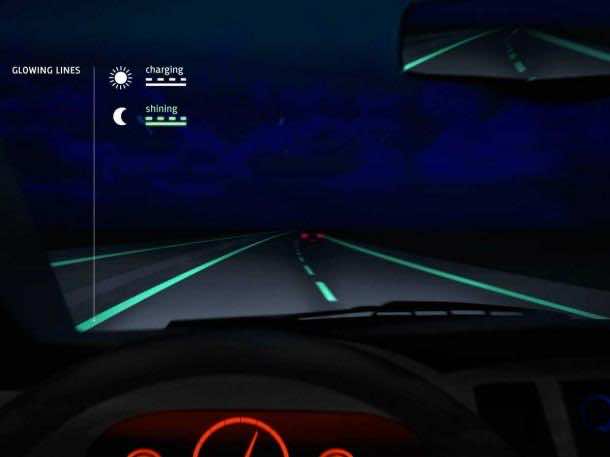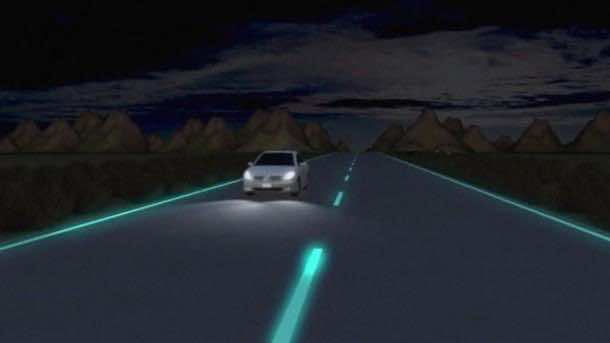We usually cover cars and how they are being improved for efficiency and performance. But this time around, we will be talking about how roads are being altered and tweaked to provide solutions for energy crisis.
 Smart move, eh? So what is this new tweak? Ever heard of roads capable of glowing in the dark? Thats exactly what Netherlands has done by unveiling half a kilometre of glow in the dark road. The roads are basically coated with a paint containing ‘photo-luminising’ powder, which is capable of charging itself during daytime and then emits a green glow during the night. This relieves the streetlights from their duties and hence, reduces the energy consumption.
Smart move, eh? So what is this new tweak? Ever heard of roads capable of glowing in the dark? Thats exactly what Netherlands has done by unveiling half a kilometre of glow in the dark road. The roads are basically coated with a paint containing ‘photo-luminising’ powder, which is capable of charging itself during daytime and then emits a green glow during the night. This relieves the streetlights from their duties and hence, reduces the energy consumption.
 The idea comes from Daan Roosegaarde, an interactive artist, and Heijmans, a Dutch civil engineering firm. The technology is undergoing further tests and has an official launch date due later this month. This has been the first time that this technology has been used on roads and can be seen on N329 in Oss, roughly 100 kilometers South East of Amsterdam. The paint is capable of glowing in the dark for about eight hours once it has absorbed the daylight.
The idea comes from Daan Roosegaarde, an interactive artist, and Heijmans, a Dutch civil engineering firm. The technology is undergoing further tests and has an official launch date due later this month. This has been the first time that this technology has been used on roads and can be seen on N329 in Oss, roughly 100 kilometers South East of Amsterdam. The paint is capable of glowing in the dark for about eight hours once it has absorbed the daylight.
 Mr. Roosegaarde said last year that ‘The government is shutting down streetlights at night to save money; energy is becoming much more important than we could have imagined 50 years ago. This road is about safety and envisaging a more self-sustainable and more interactive world.’ The team has further plans of incorporating weather symbols into the road so that the road displays symbols as per the weather condition. The key idea over here is to make people and technology interact in a useful manner. Mr. Roosegaarde was also the genius behind the dance floor lights, which were powered by the dancer’s movements.
Mr. Roosegaarde said last year that ‘The government is shutting down streetlights at night to save money; energy is becoming much more important than we could have imagined 50 years ago. This road is about safety and envisaging a more self-sustainable and more interactive world.’ The team has further plans of incorporating weather symbols into the road so that the road displays symbols as per the weather condition. The key idea over here is to make people and technology interact in a useful manner. Mr. Roosegaarde was also the genius behind the dance floor lights, which were powered by the dancer’s movements.
He said; ‘I was completely amazed that we somehow spend billions on the design and R&D of cars but somehow the roads – which actually determine the way our landscape looks – are completely immune to that process.’ Heujmans was already tinkering with projects which involved energy neutral streetlights when our interactive designer joined the company. According to Mr. Roosegarde; ‘”I thought that was updating an old idea, and I forced them to look at movies of jellyfish. How does a jellyfish give light? It has no solar panel, it has no energy bill. And then we went back to the drawing board and came up with these paints which charge up in the daytime and give light at night.’
According to Heijmans; glow in the dark technology essentially “a sustainable alternative to places where no conventional lighting is present”.
 Professor Pete Thomas, Loughborough University’s Transport Safety Research Centre believes that the innovation on roads must be encouraged but also asks that these innovations must prove themselves to be worthy; ‘We have some high visibility markings already on roads in the UK, plus cats-eye technology etc. So the question is how much better than these is this alternative? If we put this technology on all unlit roads that would be a lot of kilometers and it would be a big investment so if safety improvement is the target then we need hard evidence about how this compares to what we already have and to back up any safety claims.’
Professor Pete Thomas, Loughborough University’s Transport Safety Research Centre believes that the innovation on roads must be encouraged but also asks that these innovations must prove themselves to be worthy; ‘We have some high visibility markings already on roads in the UK, plus cats-eye technology etc. So the question is how much better than these is this alternative? If we put this technology on all unlit roads that would be a lot of kilometers and it would be a big investment so if safety improvement is the target then we need hard evidence about how this compares to what we already have and to back up any safety claims.’
We are hoping this innovation proves worthy and feasible enough to be employed in real world and help us save energy when it comes to roads.



very nice